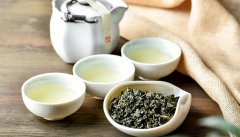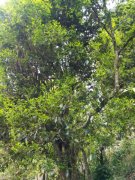What is the difference between the colors of authentic black tea? How to tell whether black tea is dyed or not?
I recently went to a teahouse where their tea is not classified by category as in most places-Pu'er tea, black tea, oolong tea, green tea, etc.-but by the degree of baking. Deep baking, medium baking, and light baking. Of course, they do not cover all tea categories. Only black tea, oolong tea and green tea, but this concept caught my attention. After ordering their deep-roasted oolong tea, I looked at my tea system. The resulting liquid is incredibly dark-like the color of an espresso. Coincidentally, it is almost as powerful as espresso in terms of energy quality. However, I do not feel too much caffeine, on the contrary, I get good tea flavor and good tea excitement. Indeed, brewed tea can have many beautiful colors: oak brown, amber orange, emerald green, honey yellow. Plenty more. As we already know, the color of tea does not always correspond to the type of tea. In the West, we usually order black tea and receive dark brown, almost black tea. When it comes to Chinese black tea (black tea-"black tea"), the colors range from dark brown to light gold. So what factors affect the color of brewed tea? Types of tea the color of brewed tea does not always correspond to their respective types of tea. However, generally speaking, the liquid of Pu'er tea is darker, while the liquid of white tea is almost transparent. The five different types of tea are as follows: pu'er tea is a kind of post-fermented tea. After roasting and fermentation, Pu'er tea has a deep color and mellow taste after aging (sometimes for many years). Black tea is also called black tea or "hong cha". The processing of black tea forces the tea to be oxidized from green to copper red. The change in leaf color is indeed called oxidation. After full fermentation, the leaves of black tea are black. It produces a dark-colored liquid, as well as a soft but profound feature. Oolong tea Oolong tea belongs to semi-oxidized tea, which is between unoxidized green tea and completely oxidized black tea. The final amount of oxidation depends on the type of tea. The result can be slightly fermented oolong tea, similar to light green tea. Or more fermented tea, such as strong tea and strong tea. Green tea artists use a variety of methods to burn freshly harvested tea to prevent the natural oxidation process and to maintain the fresh green quality of the tea. So brew an incredibly fresh spring green. Green tea is mainly produced in China, Japan, South Korea and Southeast Asia during the spring growing season (from March to May).

White tea is the least processed among the five kinds of tea. It undergoes a slow process of withering, solidifying and drying. This gives the white tea a subtle taste, a smooth taste and a delicate fruit sweet aftertaste. White tea is more adaptable to water temperature and brewing time than green tea, and has less bitterness. The resulting liquids vary in color, from dark orange to almost transparent liquids. The darker color of oxidation brewing indicates that the degree of oxidation of tea is higher, while the lighter color of brewing indicates that the degree of oxidation is light. This is easily noticed in oolong tea. Dark oolong teas such as Dancong oolong tea are more oxidizing and are close to black tea in liquid color and strong malt flavor. Light oolong tea, such as Taiwan's Dongding oolong tea has a slight oxidation, very mild, is floral, grass, similar to green tea. Heating this is a method of heating tea leaves to prevent oxidation. It can be roasted, steamed or fried. Let's compare two popular Japanese green teas: the leaves of fried tea are steamed soon after harvest. The result is a beautiful and vibrant green brown. On the other hand, hojiccha leaves are roasted after harvest. The result is a warm brown liquid. Both of these teas are green teas, but the results are completely different according to the processing method. Aging means that processed tea leaves do not touch for a period of time and remain for a year or more to form unique characteristics and flavor (much like wine or cheese). In the case of white tea, the effect of tea age on brewing is obvious. For unaged white tea like Silver Needle, the color of the brewed tea can be incredibly light ivory. In contrast, aged white tea, such as aged white peony, will have a bright orange liquid color. This is the last point we want to talk about. Although all the variables listed above depend on the skill of the tea artist, the steepness of the tea depends entirely on you! What we mean by "brewing" is how long you choose to brew the tea. Every kind of tea has a tested time, which is the best time to soak. Extract all its subtle notes and flavors without overbrewing. For example, if our organic Longjing green tea is soaked for 3 minutes (Western style), it will produce a subtle and lightest green hue. However, if you soak too much for 10 minutes, the beer will be dark orange. This is not the exquisite green tea we want! In addition, the taste of tea will produce unnecessary bitterness, thus masking the subtle sweetness of tea. In general, oxidized teas produce darker colors, while less oxidized or non-oxidized teas produce lighter colors. However, in a particular type of tea, there is always room for creativity!
Important Notice :
前街咖啡 FrontStreet Coffee has moved to new addredd:
FrontStreet Coffee Address: 315,Donghua East Road,GuangZhou
Tel:020 38364473
- Prev

Which is better, Tieguanyin or Longjing? Who tastes better? What is the price of authentic Tieguanyin?
A brief discussion on the History of Tieguanyin Oolong Tea Tieguanyin is also called Tieguanyin and Tieguanyin. It originated in Anxi in southern Fujian during the Qing Dynasty (1644-1911). Anxi is an ancient tea producing area. The tea industry there can be traced back to hundreds of years ago, and ancient tea trees are often found, some of which are more than 1000 years old. However, these wild trees show the rich tea calendar in the area.
- Next

What is the difference between tree tea and tree tea? What are the characteristics and benefits of ancient tea?
In the modern tea world, wild tea trees are a huge controversy. More and more tea merchants are using the mysterious charm of wild tea trees as a marketing strategy. As a result, more tea lovers are beginning to believe that these teas are not real teas. Most ancient tea trees grow in Yunnan, China
Related
- What ratio of water temperature and ground does the smart cup method use to press coffee? The difference between brewed coffee and filtered coffee?
- What is the standard process for the purpose of coffee cup testing? What is the difference between hand-brewed coffee and cup testing?
- How to use hand-brewed coffee paragon small golden balls? How does cold coffee lock in the aroma of coffee?
- Is American coffee black? What is the difference between American coffee and drip coffee?
- Unexpected! Well-known tea beverage brand Lele Tea will withdraw from the Zhengzhou market!
- Starbucks enters the fashion and beauty industry?! Netizen: Give me an ice American eye cream
- Why can American refills for free? The difference between Americano and American drip pot coffee
- Being chased out of the rain in front of Starbucks?! Store: Sheltering from rain under umbrellas poses a safety hazard
- The white moonlight has changed?! Lucky launches "Big Winter Pear American"
- Hand-brewed coffee three-stage method, high-sweet and universal brewing method to share! What does the high sweet water level of hand-brewed coffee mean?

